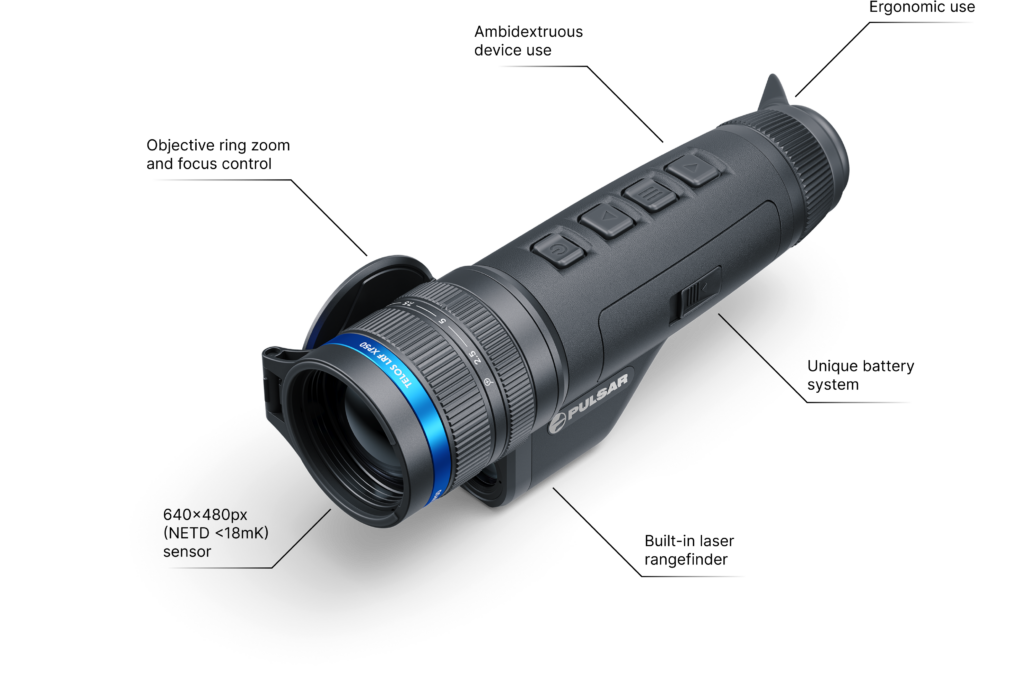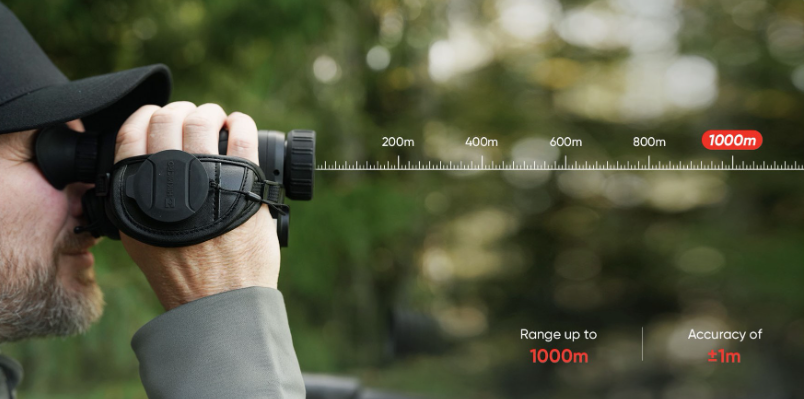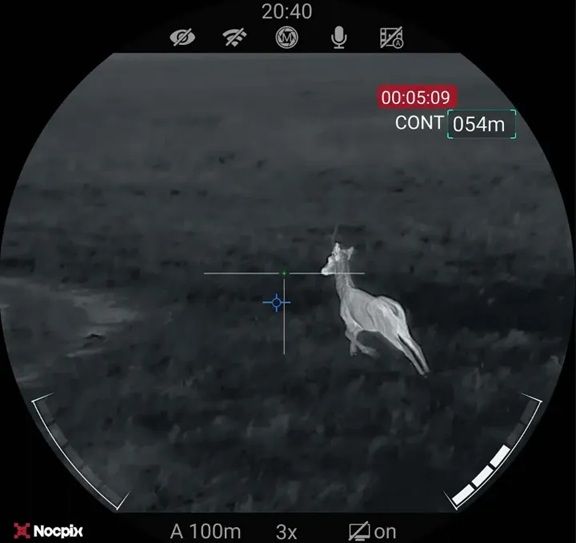Thermal Monocular and Binocular Purchasing Guide
When choosing a thermal monocular or thermal binocular, consider the following information. This guide provides the ultimate source for finding the best thermal monocular or binocular for your needs.

Thermal Sensor Resolutions
160x192
- Entry-Level Resolution: Suitable for basic detection at close ranges (50–100m). Provides general shapes and heat signatures but lacks fine detail, ideal for entry-level users.
- Best For: Short-range observation, budget-friendly units, or basic thermal detection.
256x192
- Enhanced Entry-Level: Offers improved detail over 160x192, suitable for moderate distances (up to 250m) without high-end investment.
- Best For: Short to mid-range detection, wildlife observation, and surveillance.
384x288
- Standard Resolution: Balances image clarity and price, allowing moderate detail for object identification at greater distances.
- Best For: Medium-range applications, hunting, wildlife tracking, and general outdoor use.
640x480
- High Resolution: Sharp images with better identification at longer ranges, ideal for demanding applications.
- Best For: Medium to long-range detection, detailed observation for professionals or enthusiasts.
640x512
- Enhanced High Resolution: Larger vertical field providing more detail, excellent for accurate imaging across wide areas.
- Best For: Professional and recreational hunting, search and rescue, security, wildlife observation.
1024x768
- Ultra-High Resolution: Ideal for fine, precise thermal imaging with superior range and clarity.
- Best For: Long-range applications, professional-grade thermal imaging in adverse conditions.
1280x1080
- Professional-Grade Resolution: Highest commonly available resolution, providing exceptional detail at long distances.
- Best For: High-end hunting, search and rescue in challenging conditions, and surveillance applications.

Pixel Pitch Overview: Why It Matters
Pixel pitch refers to the distance between the centres of two adjacent pixels on a thermal sensor. Measured in microns (µm), it impacts image detail and clarity: smaller pixel pitch = more detail.
Pixel pitch affects image quality and detection range. Smaller pitches provide a denser image and better fill factor, enhancing detail. A smaller pixel pitch paired with a higher resolution sensor yields sharper, clearer images for identifying distant or small targets.
Common Pixel Pitches: 17µm vs 12µm
17µm Pixel Pitch
- Overview: Standard pitch offering balance between detail and cost, common in mid-range units.
- Performance: Clear imaging for moderate to long-range applications, though less detailed than smaller pitch units.
- Best For: General hunting, observation, and standard clarity needs.
12µm Pixel Pitch
- Overview: Smaller pitch allows higher resolution and image detail.
- Performance: Denser pixels, improved clarity at long distances, excellent for demanding applications.
- Best For: Professional hunting, long-range surveillance, and precision tasks in adverse or low-contrast conditions.
Example: 640x512 with 12µm produces a sharper image than 17µm at same resolution. High-end devices like HIKMICRO Habrok HX60L use 1280x1080 with 12µm for maximum clarity.
NETD (Noise Equivalent Temperature Difference) Overview
NETD indicates a thermal imager's sensitivity to temperature differences, measured in millikelvin (mK). Lower NETD values (<20mK) detect smaller variations, producing clearer images in fog, rain, or low-contrast environments.
NETD Ratings Explained
- <15mK: Exceptional sensitivity, ideal for professionals in adverse weather.
- <18mK: Superior sensitivity, highly detailed imaging in low-contrast situations.
- <20mK: Excellent sensitivity, versatile for long-range and variable weather.
- <25mK: High sensitivity, good performance in most conditions.
- <30mK: Moderate sensitivity, suitable for normal weather conditions.
- <35mK: Good sensitivity for general-purpose use.
- <40mK: Solid sensitivity, reliable for recreational hunting and observation.
- <50mK: Low sensitivity, mainly for fair-weather or close-range use.
- <60mK: Very low sensitivity, minimal performance in challenging conditions.
Practical Example: HIKMICRO Habrok and PULSAR Telos series have NETD as low as 15–18mK, offering high sensitivity and clarity without high cost.
Other Key Features
Objective Aperture (F Number)
Lower F numbers (e.g., F1.0) allow better thermal detection and sharper images. Example: F1.0 outperforms F1.2.
Focal Length
The lens-to-sensor distance (e.g., 35mm, 50mm) affects field of view and detection range. Larger focal lengths give narrower FOV but longer detection distance; smaller focal lengths offer wider FOV. Sensor resolution also affects base magnification.
Laser Rangefinder (LRF) Capability
- LRF Units: Provide precise distance measurement.
- Non-LRF Units: More compact, focus solely on thermal imaging.

Price Range
Varies by specification and brand. Higher resolution, lower NETD, larger lenses, and LRF increase price.
Manufacturer Image Algorithms, Firmware, and Processing
Manufacturer algorithms and firmware affect sharpness, contrast, and image clarity. Firmware updates can improve processing efficiency, battery life, and add new features. Devices with identical hardware can perform differently depending on the manufacturer’s image processing and optimization.

Display Types
- AMOLED/OLED: Vibrant, high-contrast, self-emissive displays; conserve power.
- Micro-Displays: Compact, high-resolution, lightweight; ideal for smaller devices.
- Display Shape and Size: Circular displays mimic traditional scopes; larger displays reduce eye strain.
Heads-Up Display (HUD) and Menu Systems
Manufacturer experience affects HUD and menu intuitiveness. Experienced manufacturers create clean, intuitive, and user-friendly interfaces with shortcuts, presets, and context-sensitive help.






